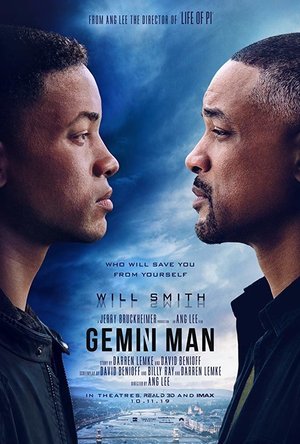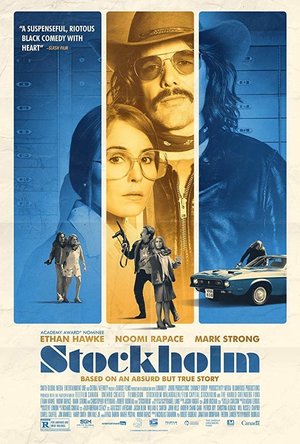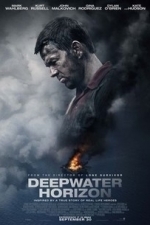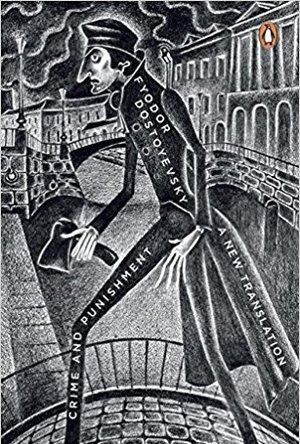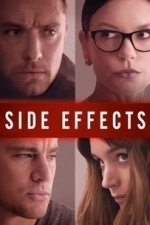Search
Charlie Cobra Reviews (1840 KP) rated Gemini Man (2019) in Movies
Jul 7, 2020
Innovative and Intriguing, Double The Will Smith Fails To Push The Movie From Good To Great
Contains spoilers, click to show
So before I saw this movie I actually saw Will Smith on The Stephen Colbert Show. They rolled a clip from the motorcycle fight scene from the movie and I was taken aback by how fake some of it looked. And not the action of it but the movements of the younger Will Smith clone. On the show Will Smith said that this is the first film where the entire character of the young clone was completely digital and there was no MOCAP or digital de-aging. I'm not sure if it was this new way of having the character there that caused the movement to look so fake but some of the scenes had parts that were downright laughable. Since I knew this already I tried not to go into the movie with too high of expectations. And because of this and really giving it a chance I think I was more able to enjoy it then others who will definitely be turned off by it. I hate that for some people it will hurt there ability to suspend belief because that's one reason we all go to the theater. To get sucked into another world where anything is possible and forget about the real world for an hour or two. This really was a good movie besides that being it's greatest fault. There are even some scenes where it looks totally fine and really good. Most scenes like that are zoomed into his face during dialogue and the amount of detail they did was really fantastic. I mean Will Smith did a great job as this disillusioned assassin, Mary Elizabeth Winstead did a good job as a rookie agent meant to be surveiling him, and Benedict Wong was cool as Baron his friend and ex-colleague. Even Clive Owen did good as Clay Varris, head of a top-secret black ops unit codenamed "Gemini". The plot wasn't very complicated, Will retires and starts learning that people he killed were innocent and then people start trying to kill him before he can learn the truth. He finds out that a younger clone of himself is trying to kill him and he tries not to kill him as he tries to take down the man responsible for this. Nothing remarkable but there were some pretty good action scenes especially the finale where they fight in the town. As I said I give this movie a 6/10.

Into the Wind: My Six-Month Journey Wandering the World for Life's Purpose
Book
Without a map, nineteen-year-old Jake Ducey leaves behind a drug-filled life and college basketball...

Carcassonne
Entertainment and Games
App
a classic board game turned into an app. Tile laying game, where each turn you draw a tile and place...
BoardGameApp
BackToTheMovies (56 KP) rated The Captor (2019) in Movies
Jun 21, 2019
2019 certainly seems to be the year of Ethan Hawke slaying it in movies! The Kid was a powerhouse performance enough to warrant and the year off but then The Captor is released and once again. Wow. Ethan Hawke only goes and blows the bloody doors off this real-life true story about a bank robbery in Stockholm. This is our The Captor review.
It’s 1973 and Lars Nystrom (Hawke) walks into a bank in Stockholm firing a rifle and takes two staff members hostage. Demanding $1m, a blue Mustang and the release of Gunnar Sorensson (Mark Strong) a famous bank robber. What transpires over the next few hours is beyond belief and it’s difficult to even comprehend that most of this actually happened in real life!
Starring an all-star cast of Hawke, Mark Strong and Noomi Rapace The Captor has cult classic written all over it. Hawke plays this bat shit crazy robber who’s jumped in way above his head. The performances all round not only support Hawke’s center stage dominance but they add depth to the story. We have moments of relaxation in the vaults as character arcs are developed and relationships formed. It really is a film that’s all guns blazing one minute, hilarious comedic moments the next and then tones down and becomes level headed the next.
Director and screenwriter Robert Budreau never over embellish any scenes or characters. We really see both sides of Nystrom’s (Hawke) motives and back story. A man so up front with bravado when push comes to shove but a character of layers with a vulnerable and kind-nature hiding inside. The latter of those personality traits leads to one of the captors in question falling for her captor. Stockholm Syndrome explains this very phenomenon and in the US the movie is actually titled ‘Stockholm’ before being renamed to The Captor here in the UK.
Mark Strong rocks the double denim as Gunnar Sorensson and acts like a brother of sorts to Hawke’s Nystrom. It’s great watching the scenes between the police throughout as they scramble to try and meet Nystrom’s ludicrous demands. Gunnar’s intentions are never clear or really explained throughout. He’s just happy to be out of jail if albeit with an ulterior motive.
I feel as thou the direction of the movie is trying to put us in the shoes of the hostages. The very same hostages that in real life never testified against their captors. They’re portrayed as the rebellious force with good motives whilst the police are portrayed as the bad guys who want to make them pay. Noomi Rapace plays the emotional anchor of the movie and the bond that develops between her and Nystrom is palpable.
“This movie has cult classic written all over it”
There’s no psychological explanation about the phenom that is Stockholm Syndrom it’s just a routine, tootin good time!
https://backtothemovies.com/the-captor-review-a-cult-classic-ethan-hawke-at-his-finest/
It’s 1973 and Lars Nystrom (Hawke) walks into a bank in Stockholm firing a rifle and takes two staff members hostage. Demanding $1m, a blue Mustang and the release of Gunnar Sorensson (Mark Strong) a famous bank robber. What transpires over the next few hours is beyond belief and it’s difficult to even comprehend that most of this actually happened in real life!
Starring an all-star cast of Hawke, Mark Strong and Noomi Rapace The Captor has cult classic written all over it. Hawke plays this bat shit crazy robber who’s jumped in way above his head. The performances all round not only support Hawke’s center stage dominance but they add depth to the story. We have moments of relaxation in the vaults as character arcs are developed and relationships formed. It really is a film that’s all guns blazing one minute, hilarious comedic moments the next and then tones down and becomes level headed the next.
Director and screenwriter Robert Budreau never over embellish any scenes or characters. We really see both sides of Nystrom’s (Hawke) motives and back story. A man so up front with bravado when push comes to shove but a character of layers with a vulnerable and kind-nature hiding inside. The latter of those personality traits leads to one of the captors in question falling for her captor. Stockholm Syndrome explains this very phenomenon and in the US the movie is actually titled ‘Stockholm’ before being renamed to The Captor here in the UK.
Mark Strong rocks the double denim as Gunnar Sorensson and acts like a brother of sorts to Hawke’s Nystrom. It’s great watching the scenes between the police throughout as they scramble to try and meet Nystrom’s ludicrous demands. Gunnar’s intentions are never clear or really explained throughout. He’s just happy to be out of jail if albeit with an ulterior motive.
I feel as thou the direction of the movie is trying to put us in the shoes of the hostages. The very same hostages that in real life never testified against their captors. They’re portrayed as the rebellious force with good motives whilst the police are portrayed as the bad guys who want to make them pay. Noomi Rapace plays the emotional anchor of the movie and the bond that develops between her and Nystrom is palpable.
“This movie has cult classic written all over it”
There’s no psychological explanation about the phenom that is Stockholm Syndrom it’s just a routine, tootin good time!
https://backtothemovies.com/the-captor-review-a-cult-classic-ethan-hawke-at-his-finest/
Merissa (13472 KP) rated The Botanist (The Sin Bin #2.5) in Books
Sep 16, 2017
The Botanist: Short Story (The Sin Bin #2.5) by Dahlia Donovan
The Botanist is part of The Sin Bin series, and let me tell you, this may be classed as a short story, but it is full of everything you could wish for... apart from one thing, which I'll get to later!
Wyatt (Earp) Hardy is a Navy Seal, on a combined exercise with the UK. They come across a boat that shouldn't be there, and their scans reveal four bodies on-board, when there should only be one. It turns into a rescue mission, and Wyatt lays eyes on Aled for the first time. Aled has been tortured, and is in a state of shock. However, he is returned home, and Hamish and Wyatt hope that he will be okay.
He's not.
I am a long-term fan of Ms. Donovan's; she has never disappointed me with any of her stories - and trust me when I say this one is right up there! Wyatt is a giant of a man, with a heart to match. He wants to push Aled in some ways, but never bad ways. He goes above and beyond to do what he thinks will help. Aled, what a brave and courageous guy, even when he thinks he isn't. The rapport that these two have is off the charts, and I loved the pair of them.
With no editing or grammatical errors to disrupt my reading flow, this was one helluva story that packs a mighty punch for being short. And that, right there, is the only problem I have with it! I NEEDED MORE!!!! I seriously wasn't ready for this book to be over. I loved every single word. There just weren't enough of them to please me ?
Do I recommend this book? Absolutely!
Do I recommend any of Dahlia Donovan's work? You betcha!
Do I want more from Aled and Wyatt? YES!!!!!!
* A copy of this book was provided to me with no requirements for a review. I voluntarily read this book, and the comment here are my honest opinion. *
Merissa
Archaeolibrarian - I Dig Good Books!
Wyatt (Earp) Hardy is a Navy Seal, on a combined exercise with the UK. They come across a boat that shouldn't be there, and their scans reveal four bodies on-board, when there should only be one. It turns into a rescue mission, and Wyatt lays eyes on Aled for the first time. Aled has been tortured, and is in a state of shock. However, he is returned home, and Hamish and Wyatt hope that he will be okay.
He's not.
I am a long-term fan of Ms. Donovan's; she has never disappointed me with any of her stories - and trust me when I say this one is right up there! Wyatt is a giant of a man, with a heart to match. He wants to push Aled in some ways, but never bad ways. He goes above and beyond to do what he thinks will help. Aled, what a brave and courageous guy, even when he thinks he isn't. The rapport that these two have is off the charts, and I loved the pair of them.
With no editing or grammatical errors to disrupt my reading flow, this was one helluva story that packs a mighty punch for being short. And that, right there, is the only problem I have with it! I NEEDED MORE!!!! I seriously wasn't ready for this book to be over. I loved every single word. There just weren't enough of them to please me ?
Do I recommend this book? Absolutely!
Do I recommend any of Dahlia Donovan's work? You betcha!
Do I want more from Aled and Wyatt? YES!!!!!!
* A copy of this book was provided to me with no requirements for a review. I voluntarily read this book, and the comment here are my honest opinion. *
Merissa
Archaeolibrarian - I Dig Good Books!
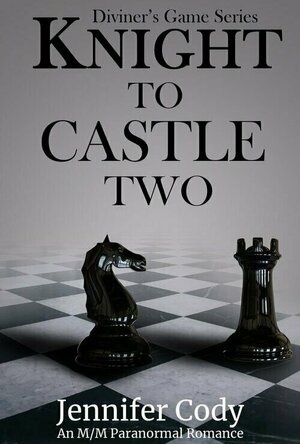
Knight to Castle Two (Diviner's Game #2)
Book
Loki: Surviving as a human in the world of Non-Humans means that every breath I’ve taken for...
MM Paranormal Romance Step-Brothers
Gareth von Kallenbach (980 KP) rated Bruno (2009) in Movies
Aug 9, 2019
Life is good for Austrian fashonista Bruno (Sacha Baron Cohen). As the star of the top Austrian fashion show, he is a fixture at all of the social events and is the flamboyant highpoint of any event he graces.
That is until things go awry and Bruno finds himself on the outside looking in and is blacklisted from the European fashion industry he lives for.
Undaunted, Bruno sets out to become a star and take America by storm in the shockingly outrageous and sure to be controversial “Bruno”. The film is a follow up to “Borat: Cultural Learnings of America for Make Benefit Glorious Nation of Kazakhstan” which took the box office by storm when it was released three years ago.
Upon arriving in America, Bruno sets out to be a star, but soon runs into trouble when his first day on a television set goes out of control. If this was not bad enough, Bruno’s pitch for a variety shows scores badly with a focus group who are dismayed at the very graphic depiction of the male form and other outrageous humor.
Undaunted even when his attempts at celebrity interviews crash and burn around him, Bruno sets out to get tabloid attention by adopting a baby from Africa. This leads to a daring and outrageous segment on a Texas talk show where Bruno is verbally chastised by the predominately African American audience.
Unable to catch a break, Bruno travels to locales as diverse as Israel, Alabama, and Los Angeles hoping to get a break, but only finds failure. Despite his horrible luck, Bruno has the adoration of his assistant Lutz (Gustaf Hammarsten), which sadly for Gustaf is unrequited.
Desperate for acceptance, Bruno decides to become straight and sets off to the South to learn what being a straight man is all about which sets up some outrageous encounters ranging from a swingers party to a hilarious macho man event hosted by Bruno as “Straight Dave”.
While there are those who will see only the nudity and crude humor of the film and dismiss it, those who are more open minded will see the genius of Cohen who is a master of improvisational. It is fascinating to see how much he throws himself into a scene and literally becomes his characters. No matter how outrageous the scenario, Cohen is not afraid to push the boundaries and get people to expose their true selves.
While his scenarios shock, they also educate and enlighten as he gets his unsuspecting co-stars to show sides of themselves and human nature which people try to hide and ignore. Despite thinking we are an enlightened society, there are those that are shocked by a person who is so flamboyant and open, even swingers whose very lifestyle is considered by most to be out of the norm and for others to be unordinary.
Numerous celebrity appearances also grace the film, which I will refrain from spoiling but suffice it to say add to the enjoyment of the film.
The movie does not have much in the way of plot and character development, but that is not the intention of the film, as the plot is a framework to connect the segments which work well in my opinion.
Unlike a Saturday Night Live sketch turned into a movie, “Bruno” works well within the films run time without overstaying its welcome and losing momentum.
In the end, you will either love or hate the film, and much of this will depend on your tolerance for very mature, bawdy, and controversial humor. For my taste, this was one of the funniest films I have ever seen and I could not stop laughing.
That is until things go awry and Bruno finds himself on the outside looking in and is blacklisted from the European fashion industry he lives for.
Undaunted, Bruno sets out to become a star and take America by storm in the shockingly outrageous and sure to be controversial “Bruno”. The film is a follow up to “Borat: Cultural Learnings of America for Make Benefit Glorious Nation of Kazakhstan” which took the box office by storm when it was released three years ago.
Upon arriving in America, Bruno sets out to be a star, but soon runs into trouble when his first day on a television set goes out of control. If this was not bad enough, Bruno’s pitch for a variety shows scores badly with a focus group who are dismayed at the very graphic depiction of the male form and other outrageous humor.
Undaunted even when his attempts at celebrity interviews crash and burn around him, Bruno sets out to get tabloid attention by adopting a baby from Africa. This leads to a daring and outrageous segment on a Texas talk show where Bruno is verbally chastised by the predominately African American audience.
Unable to catch a break, Bruno travels to locales as diverse as Israel, Alabama, and Los Angeles hoping to get a break, but only finds failure. Despite his horrible luck, Bruno has the adoration of his assistant Lutz (Gustaf Hammarsten), which sadly for Gustaf is unrequited.
Desperate for acceptance, Bruno decides to become straight and sets off to the South to learn what being a straight man is all about which sets up some outrageous encounters ranging from a swingers party to a hilarious macho man event hosted by Bruno as “Straight Dave”.
While there are those who will see only the nudity and crude humor of the film and dismiss it, those who are more open minded will see the genius of Cohen who is a master of improvisational. It is fascinating to see how much he throws himself into a scene and literally becomes his characters. No matter how outrageous the scenario, Cohen is not afraid to push the boundaries and get people to expose their true selves.
While his scenarios shock, they also educate and enlighten as he gets his unsuspecting co-stars to show sides of themselves and human nature which people try to hide and ignore. Despite thinking we are an enlightened society, there are those that are shocked by a person who is so flamboyant and open, even swingers whose very lifestyle is considered by most to be out of the norm and for others to be unordinary.
Numerous celebrity appearances also grace the film, which I will refrain from spoiling but suffice it to say add to the enjoyment of the film.
The movie does not have much in the way of plot and character development, but that is not the intention of the film, as the plot is a framework to connect the segments which work well in my opinion.
Unlike a Saturday Night Live sketch turned into a movie, “Bruno” works well within the films run time without overstaying its welcome and losing momentum.
In the end, you will either love or hate the film, and much of this will depend on your tolerance for very mature, bawdy, and controversial humor. For my taste, this was one of the funniest films I have ever seen and I could not stop laughing.
Gareth von Kallenbach (980 KP) rated Deepwater Horizon (2016) in Movies
Jul 15, 2019
On April 20th 2010, approximately 40 miles off of the Louisiana coast, the Deepwater Horizon drilling rig exploded and sank spilling over 3 million barrels of oil into the Gulf of Mexico. The Deepwater Horizon oil spill, also known as the Gulf oil spill and BP oil spill, is the worst oil spill in U.S. history, and cost 11 crew members their lives. It’s also one of the largest environmental disasters in history, who’s total cost to the marine life, fishing community, and entire Gulf coast is still unknown. The film Deepwater Horizon is based on the true story of the men and women who were working on the rig the day of the disaster.
As a new team arrives for a 21-day shift they can already tell something is not exactly right, when the contracted testing crew is leaving without conducting critical tests. The man in charge of the vessel, Jimmy Harrell (Kurt Russell), sets out to find out why the contractors have been dismissed and who let them go. Chief electronics technician Mike Williams (Mark Wahlberg) also goes to question the crew as to what has happened while he was off ship and how long the list is of things he needs to fix. Through a quick investigation by Mike and Jimmy find that BP officials, headed by Vidrine (John Malkovich), are the ones who made the decision. The BP officials chose to assume that everything was fine, and since the Deepwater Horizon was 43 days past their deadline and the rising costs were mounting. Their decision was that it was time to cap the well and move to the next site. That didn’t sit well with Mr. Jimmy, as most of the crew call him, so he demands that one more test is to be run before anything else happens.
The BP officials remind him of the cost and loss of money but eventually agree to the test. The initial test fails but before additional test can be run Jimmy is called away to another part of the vessel. With the addition test being inconclusive, and Mike and Jimmy not around, Vidrine pressures the crew to push forward and move on. Reluctantly the crew and Jimmy agree to move forward. A frustrated Jimmy retires to his crew quarters to get ready for a long night. Mike heads to his shop to video chat with his wife and start the monumental task of fixing all that is wrong aboard the Deepwater Horizon. At about 10 PM the entire vessel was rocked by an explosion. With that the crew rushes frantically to try and stop an even greater disaster and make their way safely off the Deepwater Horizon.
Director Peter Berg (Lone Survivor, Hancock, The Kingdom) does a great job of holding a steady pace throughout this film. The story moves well and once the action begins the intensity and suspense left me on the edge of my seat. The casting is great with Dylan O’Brien, Kate Hudson, Gina Rodriguez and others joining the previously mentioned Wahlberg, Russell and Malkovich. In focusing on the men and women who were on the Deepwater Horizon and their families it makes it a very creative an emotional tribute to the 11 men who perished that night. It does paint the large oil company (BP) as a villain, driven by profit to a point of recklessness, in a way that may be a little too political for some. I found it an informative story, showing a different side to a very well-known disaster.
As a new team arrives for a 21-day shift they can already tell something is not exactly right, when the contracted testing crew is leaving without conducting critical tests. The man in charge of the vessel, Jimmy Harrell (Kurt Russell), sets out to find out why the contractors have been dismissed and who let them go. Chief electronics technician Mike Williams (Mark Wahlberg) also goes to question the crew as to what has happened while he was off ship and how long the list is of things he needs to fix. Through a quick investigation by Mike and Jimmy find that BP officials, headed by Vidrine (John Malkovich), are the ones who made the decision. The BP officials chose to assume that everything was fine, and since the Deepwater Horizon was 43 days past their deadline and the rising costs were mounting. Their decision was that it was time to cap the well and move to the next site. That didn’t sit well with Mr. Jimmy, as most of the crew call him, so he demands that one more test is to be run before anything else happens.
The BP officials remind him of the cost and loss of money but eventually agree to the test. The initial test fails but before additional test can be run Jimmy is called away to another part of the vessel. With the addition test being inconclusive, and Mike and Jimmy not around, Vidrine pressures the crew to push forward and move on. Reluctantly the crew and Jimmy agree to move forward. A frustrated Jimmy retires to his crew quarters to get ready for a long night. Mike heads to his shop to video chat with his wife and start the monumental task of fixing all that is wrong aboard the Deepwater Horizon. At about 10 PM the entire vessel was rocked by an explosion. With that the crew rushes frantically to try and stop an even greater disaster and make their way safely off the Deepwater Horizon.
Director Peter Berg (Lone Survivor, Hancock, The Kingdom) does a great job of holding a steady pace throughout this film. The story moves well and once the action begins the intensity and suspense left me on the edge of my seat. The casting is great with Dylan O’Brien, Kate Hudson, Gina Rodriguez and others joining the previously mentioned Wahlberg, Russell and Malkovich. In focusing on the men and women who were on the Deepwater Horizon and their families it makes it a very creative an emotional tribute to the 11 men who perished that night. It does paint the large oil company (BP) as a villain, driven by profit to a point of recklessness, in a way that may be a little too political for some. I found it an informative story, showing a different side to a very well-known disaster.
Haley Mathiot (9 KP) rated Crime and Punishment in Books
Apr 27, 2018
**spoilers**
Crime and Punishment by Fyodor Dostoevsky. read by Anthony Heald.
Genre: Fiction, classic
Rating: 5
Sin, Sentence, and Salvation
The allegory of Crime and Punishment
Crime and Punishment, one of the more famous works of Fyodor Dostoevsky, is considered “the first great novel of his mature period,” (Frank, 1995) and is one of his more famous books, rivaled only by The Brothers Karamazov. What makes Crime and Punishment such a classic? Perhaps because it is a picture of the only classic, and greatest story of all time. Crime and Punishment is an allegory of Salvation.
Self-justified
The main character, Rodion Romanovich Raskolnikov, was a poor student at a university, and was overcome with hate toward an old pawnbroker, and decided to rid the world of her for the greater good of everyone. He believed that she was a “louse,” and since everyone would be happier without her, his actions would be justified. He believed that he had broken the letter of the law only, but that it didn’t have any authority over him anyway because it was written by people just as low as himself. He didn’t believe in God, and in prison he was convinced that he didn’t deserve his treatment, and that it was something he simply needed to get over with. He had no higher authority, so he said “my conscience is at rest.” This is a picture of man before he is touched by the merciful salvation of Christ.
A Troubled Man
Although Raskolnikov justified his actions in killing the old woman, he still felt an overwhelming sense of guilt and fear over what he did. He worked very hard at keeping it a secret, and at first he thought he could live with the guilt that sat in back of his mind, but he was wrong. Raskolnikov had horrible dreams, was always sick, and one of the other characters noticed that he was constantly “set off by little things” for no apparent reason (though the reader knew that it was only because it reminded him of his crime). This represents a man who knows in his heart that he is a sinner, but who will not turn and repent from his sin.
Unending Love
Sonya Semyonovna Marmeladov was the daughter of a drunkard who “took the yellow card” and prostituted herself to support her family. Throughout the book, Sonya began to love Raskolnikov. Eventually, Raskolnikov told Sonya his secret. Sonya was horrified, but still loved him and forgave him after her initial shock wore off. As Raskolnikov was fighting inside with his conscience and his sins, he repeatedly snapped at her, refused her comfort, yelled at her, and so on. He was a bitter, angry, hateful man—and yet Sonya forgave him for everything he did to her, and everything he had done in his past. What redeeming quality Sonya saw in the wretch and why she forgave him, one cannot begin to comprehend; aside from the simple truth that Sonya was a loving, gentile, merciful girl. She saw that Raskolnikov needed someone to love him and she reached out to him, even when he repeatedly pushed her away. Sonya’s love for him is a picture of Christ’s unending and perfect love to His sinful people.
A Silent Witness
When Raskolnikov finally broke down and confessed his crime, Sonya moved to Siberia with him. Raskolnikov expected this, and knew that telling her not to come would be fruitless. She visited him often in prison and wrote to his family for him. But although Raskolnikov expected her to preach to him and push the Gospel in his face, she did not. Sonya followed the scripture’s instruction to Christian wives with non-Christian husbands in 1 Peter 3:1—“ Wives, in the same way be submissive to your husbands so that, if any of them do not believe the word, they may be won over without words by the behavior of their wives…” The verse tells women to be good examples of Christ to their non-Christian husbands rather than to preach to them and try to convert them, and that is exactly what Sonya did, even though she was not married to him. She did not try to convert him with words; rather she won him with her love. She did not push the Testament into Raskolnikov’s hands, he asked for it. When she did bring it, she did not pester him to read it. She had faith, and showed Raskolnikov the love of Christ through her actions. In the end, it paid off. Although Dostoevsky does not specifically say that Raskolnikov was converted, he does imply that he eventually became a Christian when he mused “Can not her own convictions now be mine?”
The truth will set you free
When Raskolnikov finally realized that he loved Sonya, he accepted that he was a criminal, and a murderer. When he finally accepted that he was a sinner, he repented and had a new life in him. He said he felt like “he had risen again” and that Sonya “lived only in his life.” By life, Dostoevsky refers to his mentality. Before, he had been a living dead man in prison. He was hated by his inmates, was almost killed by them in an outbreak, was unaffected by anything that happened to him or his family, and eventually became ill from it all. But after his resurrection, he repented from his sins, learned to move on with his life, and started to change. He began to converse with his inmates, and they no longer hated him. Sonya was alive in his “life” because of her love for him. When he was changed, she was so happy that she became sick with joy, to the point that she was ill in bed. Dostoevsky paints a picture of a redeemed man at the end of his novel—redeemed both by the law, and by God. This picture symbolizes the miracle of salvation through Christ.
An amazing Allegory
Dostoevsky was a wonderful writer because of his use of dialogue to tell the story, his descriptive scenes, his powerfully developed characters, and their inner dialogue. He often times told you that something was happening by only telling you what the character who was speaking at the time said in response to what was going on. For example, if Sonya was standing up, Dostoevsky would write “… ‘hey, what do you stand for?’ for Sonya had stood.”
He also painted such good descriptions of his characters, that by the middle of the book he didn’t have to say that Raskolnikov was musing in the corner of the room, glaring at anyone who was brave enough to look at him, while he stewed in grief under his old ratted cap, because you knew from how well he was described earlier and how well his character was developed from the dialogue, that he was doing exactly that.
His characters are so real, they almost frighten you because you see the things they do and feel and experience reflected in your own life. They are not perfect—in fact they are all incredibly flawed, but they are a joy to read.
His ending is superb, because he closes the story without actually telling you everything. He never says that Raskolnikov was converted, he never says when he got out of prison, and he never says that Sonya and he were married, but you know that it happened. The last scene of the story is so superb, it makes you want to read it again, just to experience the joy all over again.
But what really made Crime and Punishment the classic that it was is the picture of the best story in the world, the classic story of the world, showing through. The story of the Gospel, of Jesus Christ’s unending love and sin and salvation is clearly portrayed, and makes a joyous read.
Works cited:
Quotes are from Crime and Punishment by Fyodor Dostoevsky, 1886
Frank, Joseph (1995). Dostoevsky: The Miraculous Years, 1865–1871. Princeton University Press. ISBN 0-691-01587-2. (source found and taken from Wikipedia.com)
1 Peter 3:1 New International Version of The Holy Bible
Audio review: I had a hard time reading the book, simply because it was so huge that it was intimidating. I bought (ouch) the audio book of Crime and Punishment, recorded by Anthony Heald who did a fantastic job reading. His voices for the characters perfectly matched them, he felt for them, and he acted them. None of them were cheesy (yeah you all know how lame some male readers are at acting female voices). He read fast enough that the story didn't drag at all, but not so fast that you'd feel like you'd miss something if you didn't listen hard. I will definitely re-listen to the audio book.
Content: some gruesome descriptions of blood from the murder
Recommendation: Ages 14+
Crime and Punishment by Fyodor Dostoevsky. read by Anthony Heald.
Genre: Fiction, classic
Rating: 5
Sin, Sentence, and Salvation
The allegory of Crime and Punishment
Crime and Punishment, one of the more famous works of Fyodor Dostoevsky, is considered “the first great novel of his mature period,” (Frank, 1995) and is one of his more famous books, rivaled only by The Brothers Karamazov. What makes Crime and Punishment such a classic? Perhaps because it is a picture of the only classic, and greatest story of all time. Crime and Punishment is an allegory of Salvation.
Self-justified
The main character, Rodion Romanovich Raskolnikov, was a poor student at a university, and was overcome with hate toward an old pawnbroker, and decided to rid the world of her for the greater good of everyone. He believed that she was a “louse,” and since everyone would be happier without her, his actions would be justified. He believed that he had broken the letter of the law only, but that it didn’t have any authority over him anyway because it was written by people just as low as himself. He didn’t believe in God, and in prison he was convinced that he didn’t deserve his treatment, and that it was something he simply needed to get over with. He had no higher authority, so he said “my conscience is at rest.” This is a picture of man before he is touched by the merciful salvation of Christ.
A Troubled Man
Although Raskolnikov justified his actions in killing the old woman, he still felt an overwhelming sense of guilt and fear over what he did. He worked very hard at keeping it a secret, and at first he thought he could live with the guilt that sat in back of his mind, but he was wrong. Raskolnikov had horrible dreams, was always sick, and one of the other characters noticed that he was constantly “set off by little things” for no apparent reason (though the reader knew that it was only because it reminded him of his crime). This represents a man who knows in his heart that he is a sinner, but who will not turn and repent from his sin.
Unending Love
Sonya Semyonovna Marmeladov was the daughter of a drunkard who “took the yellow card” and prostituted herself to support her family. Throughout the book, Sonya began to love Raskolnikov. Eventually, Raskolnikov told Sonya his secret. Sonya was horrified, but still loved him and forgave him after her initial shock wore off. As Raskolnikov was fighting inside with his conscience and his sins, he repeatedly snapped at her, refused her comfort, yelled at her, and so on. He was a bitter, angry, hateful man—and yet Sonya forgave him for everything he did to her, and everything he had done in his past. What redeeming quality Sonya saw in the wretch and why she forgave him, one cannot begin to comprehend; aside from the simple truth that Sonya was a loving, gentile, merciful girl. She saw that Raskolnikov needed someone to love him and she reached out to him, even when he repeatedly pushed her away. Sonya’s love for him is a picture of Christ’s unending and perfect love to His sinful people.
A Silent Witness
When Raskolnikov finally broke down and confessed his crime, Sonya moved to Siberia with him. Raskolnikov expected this, and knew that telling her not to come would be fruitless. She visited him often in prison and wrote to his family for him. But although Raskolnikov expected her to preach to him and push the Gospel in his face, she did not. Sonya followed the scripture’s instruction to Christian wives with non-Christian husbands in 1 Peter 3:1—“ Wives, in the same way be submissive to your husbands so that, if any of them do not believe the word, they may be won over without words by the behavior of their wives…” The verse tells women to be good examples of Christ to their non-Christian husbands rather than to preach to them and try to convert them, and that is exactly what Sonya did, even though she was not married to him. She did not try to convert him with words; rather she won him with her love. She did not push the Testament into Raskolnikov’s hands, he asked for it. When she did bring it, she did not pester him to read it. She had faith, and showed Raskolnikov the love of Christ through her actions. In the end, it paid off. Although Dostoevsky does not specifically say that Raskolnikov was converted, he does imply that he eventually became a Christian when he mused “Can not her own convictions now be mine?”
The truth will set you free
When Raskolnikov finally realized that he loved Sonya, he accepted that he was a criminal, and a murderer. When he finally accepted that he was a sinner, he repented and had a new life in him. He said he felt like “he had risen again” and that Sonya “lived only in his life.” By life, Dostoevsky refers to his mentality. Before, he had been a living dead man in prison. He was hated by his inmates, was almost killed by them in an outbreak, was unaffected by anything that happened to him or his family, and eventually became ill from it all. But after his resurrection, he repented from his sins, learned to move on with his life, and started to change. He began to converse with his inmates, and they no longer hated him. Sonya was alive in his “life” because of her love for him. When he was changed, she was so happy that she became sick with joy, to the point that she was ill in bed. Dostoevsky paints a picture of a redeemed man at the end of his novel—redeemed both by the law, and by God. This picture symbolizes the miracle of salvation through Christ.
An amazing Allegory
Dostoevsky was a wonderful writer because of his use of dialogue to tell the story, his descriptive scenes, his powerfully developed characters, and their inner dialogue. He often times told you that something was happening by only telling you what the character who was speaking at the time said in response to what was going on. For example, if Sonya was standing up, Dostoevsky would write “… ‘hey, what do you stand for?’ for Sonya had stood.”
He also painted such good descriptions of his characters, that by the middle of the book he didn’t have to say that Raskolnikov was musing in the corner of the room, glaring at anyone who was brave enough to look at him, while he stewed in grief under his old ratted cap, because you knew from how well he was described earlier and how well his character was developed from the dialogue, that he was doing exactly that.
His characters are so real, they almost frighten you because you see the things they do and feel and experience reflected in your own life. They are not perfect—in fact they are all incredibly flawed, but they are a joy to read.
His ending is superb, because he closes the story without actually telling you everything. He never says that Raskolnikov was converted, he never says when he got out of prison, and he never says that Sonya and he were married, but you know that it happened. The last scene of the story is so superb, it makes you want to read it again, just to experience the joy all over again.
But what really made Crime and Punishment the classic that it was is the picture of the best story in the world, the classic story of the world, showing through. The story of the Gospel, of Jesus Christ’s unending love and sin and salvation is clearly portrayed, and makes a joyous read.
Works cited:
Quotes are from Crime and Punishment by Fyodor Dostoevsky, 1886
Frank, Joseph (1995). Dostoevsky: The Miraculous Years, 1865–1871. Princeton University Press. ISBN 0-691-01587-2. (source found and taken from Wikipedia.com)
1 Peter 3:1 New International Version of The Holy Bible
Audio review: I had a hard time reading the book, simply because it was so huge that it was intimidating. I bought (ouch) the audio book of Crime and Punishment, recorded by Anthony Heald who did a fantastic job reading. His voices for the characters perfectly matched them, he felt for them, and he acted them. None of them were cheesy (yeah you all know how lame some male readers are at acting female voices). He read fast enough that the story didn't drag at all, but not so fast that you'd feel like you'd miss something if you didn't listen hard. I will definitely re-listen to the audio book.
Content: some gruesome descriptions of blood from the murder
Recommendation: Ages 14+
Gareth von Kallenbach (980 KP) rated Side Effects (2013) in Movies
Aug 7, 2019
Steven Soderbergh has been toying with the notion of retirement for a couple of years now, and has said that “Side Effects” will be his final film. I certainly hope not.
As its title intones, “Side Effects” is a movie about what can happen when prescription medications, such as anti-depressants, can do at their worst, leading to anyone who taking them wishing they weren’t. The movie certainly starts out looking like a propaganda-film about how Doctor’s push these drugs onto patients as they are paid by pharmaceutical representatives to test their drugs. It seems that everyone in the film is taking meds of some form or another. The cast for the film should be a recipe for success: Jude Law, Rooney Mara, Catherine Zeta-Jones and Channing Tatum. But because of this perception, the first two-thirds of the film nearly put me to sleep. And then a twist happened that the made the plot extremely complex and worth watching. In many ways, the less said about “Side Effects,” the better. This may produce a better experience for you than I had. But here’s the basic idea of the movie:
Emily Taylor, played by Rooney Mara, is introduced when she is visiting her husband Martin (Tatum), a man convicted of insider trading who is about to be released after four years behind bars. Martin’s discharge happens uneventfully, but adjusting to the new life of poverty rehashes the depression that first plagued Emily when her husband’s prison term started. This leads to Emily crashing her car head-on into the wall of the garage in her apartment building. While in the hospital, rules force her to see psychiatrist Jonathan Banks (Law).
Up until this point, I had trouble connecting with Mara’s character. While it is revealed that she had mental problems prior to this episode, you don’t really completely grasp what it is until later in the movie. Mara seemed to be very stiff, and way too much like her emotionless character from “The Girl with the Dragon Tattoo.” But then we enter Jude Law. Law’s character, Banks, is friendly, approachable and caring. He is what first drew me deeper into the movie. Though, you soon discover that he is a doctor who believes in the power of drugs. This character kept me interested because I couldn’t quite nail if he was going to be an antagonist or protagonist.
Of course our dear Dr. Banks prescribes some medications to Emily and she begins showing some disturbing side effects and… The side effects lead to really terrible, bloody things which ruins careers, lives, and even drive people to madness. Or does it?
As its title intones, “Side Effects” is a movie about what can happen when prescription medications, such as anti-depressants, can do at their worst, leading to anyone who taking them wishing they weren’t. The movie certainly starts out looking like a propaganda-film about how Doctor’s push these drugs onto patients as they are paid by pharmaceutical representatives to test their drugs. It seems that everyone in the film is taking meds of some form or another. The cast for the film should be a recipe for success: Jude Law, Rooney Mara, Catherine Zeta-Jones and Channing Tatum. But because of this perception, the first two-thirds of the film nearly put me to sleep. And then a twist happened that the made the plot extremely complex and worth watching. In many ways, the less said about “Side Effects,” the better. This may produce a better experience for you than I had. But here’s the basic idea of the movie:
Emily Taylor, played by Rooney Mara, is introduced when she is visiting her husband Martin (Tatum), a man convicted of insider trading who is about to be released after four years behind bars. Martin’s discharge happens uneventfully, but adjusting to the new life of poverty rehashes the depression that first plagued Emily when her husband’s prison term started. This leads to Emily crashing her car head-on into the wall of the garage in her apartment building. While in the hospital, rules force her to see psychiatrist Jonathan Banks (Law).
Up until this point, I had trouble connecting with Mara’s character. While it is revealed that she had mental problems prior to this episode, you don’t really completely grasp what it is until later in the movie. Mara seemed to be very stiff, and way too much like her emotionless character from “The Girl with the Dragon Tattoo.” But then we enter Jude Law. Law’s character, Banks, is friendly, approachable and caring. He is what first drew me deeper into the movie. Though, you soon discover that he is a doctor who believes in the power of drugs. This character kept me interested because I couldn’t quite nail if he was going to be an antagonist or protagonist.
Of course our dear Dr. Banks prescribes some medications to Emily and she begins showing some disturbing side effects and… The side effects lead to really terrible, bloody things which ruins careers, lives, and even drive people to madness. Or does it?
